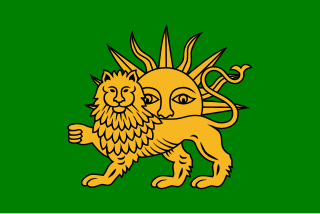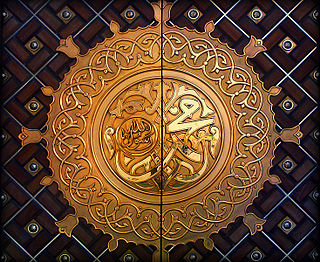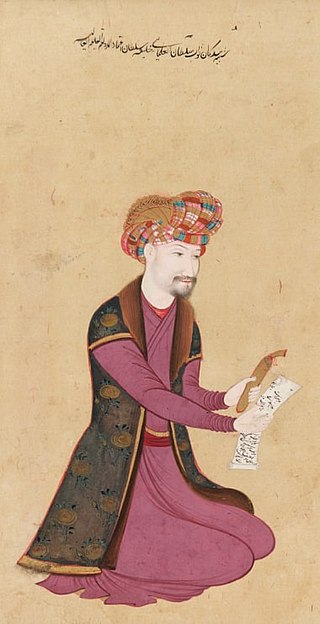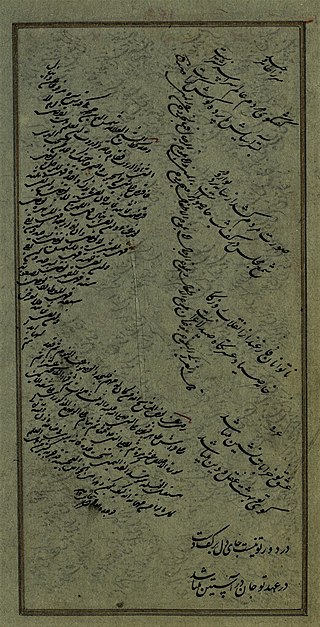Abbas may refer to:
Abbas may refer to:
In English place-names the affix "Abbas" denotes former ownership by an abbey.

The Safavid dynasty was one of Iran's most significant ruling dynasties reigning from 1501 to 1736. Their rule is often considered the beginning of modern Iranian history, as well as one of the gunpowder empires. The Safavid Shāh Ismā'īl I established the Twelver denomination of Shīʿa Islam as the official religion of the Persian Empire, marking one of the most important turning points in the history of Islam. The Safavid dynasty had its origin in the Safavid order of Sufism, which was established in the city of Ardabil in the Iranian Azerbaijan region. It was an Iranian dynasty of Kurdish origin, but during their rule they intermarried with Turkoman, Georgian, Circassian, and Pontic Greek dignitaries, nevertheless, for practical purposes, they were Turkish-speaking and Turkified. From their base in Ardabil, the Safavids established control over parts of Greater Iran and reasserted the Iranian identity of the region, thus becoming the first native dynasty since the Sasanian Empire to establish a national state officially known as Iran.
Muhammad Ali (1942–2016) was an American boxer.
Abbas II may refer to:

Naqsh-e Jahan Square, also known as the Shah Square prior to 1979, is a square situated at the center of Isfahan, Iran. Constructed between 1598 and 1629, it is now an important historical site, and one of UNESCO's World Heritage Sites. It is 160 metres (520 ft) wide by 560 metres (1,840 ft) long. It is also referred to as Shah Square or Imam Square. The square is surrounded by buildings from the Safavid era. The Shah Mosque is situated on the south side of this square. On the west side is the Ali Qapu Palace. Sheikh Lotf Allah Mosque is situated on the eastern side of this square and at the northern side Qeysarie Gate opens into the Isfahan Grand Bazaar. Today, Namaaz-e Jom'eh is held in the Shah Mosque.

The Shrine of Fatima Masumeh is located in Qom, which is considered by Twelver Shia Muslims to be the second most sacred city in Iran after Mashhad.

Hussein, Hossein, Hussain,Hossain, Huseyn, Husayn, Husein, Hussin, or Husain, coming from the triconsonantal root Ḥ-S-N, is an Arabic name which is the diminutive of Hassan, meaning "good", "handsome" or "beautiful". It is commonly given as a male given name, particularly among Shias. In Persian language contexts, the transliterations Ḥosayn, Hosayn, or Hossein are sometimes used. In the transliteration of Indo-Aryan languages, the forms "Hussain" or "Hossain" may be used. Other variants include Husên, Husejin, Husejn, Husain, Hisên, Hussain, Husayin, Hussayin, Hüseyin, Husseyin, Huseyn, Hossain, Hosein, Husseyn (etc.). The Encyclopaedia of Islam, which follows a standardized way for transliterating Arabic names, used the form "Ḥusain" in its first edition and "Ḥusayn" in its second and third editions.

Muhammad, also spelled Muhammed, Muhamad, Mohammad, Mohammed, Mahammad, Maxammed, Mehemmed, Mohamad, Mohamed, or in a variety of other ways, is an Arabic given male name meaning 'Praiseworthy'. The name comes from the passive participle of the Arabic verb ḥammada (حَمَّدَ), meaning 'to praise', which itself comes from the triconsonantal Semitic root Ḥ-M-D. Believed to be the most popular name in the world, by 2014 it was estimated to have been given to 150 million men and boys.
ʿAbbes is an old Arabic name that means "Lion". The name traces back to Al-‘Abbas ibn ‘Abd al-Muttalib in 536 CE and Abbas ibn Ali, a son of Ali ibn Abi Talib, who participated in the battle of Karbala alongside his brother Husayn ibn Ali. Abbas ibn Ali is revered by Muslims, some of whom are named Abbas in remembrance and tribute to him. There is an Arabian tribe of the same name, the Banu Abbas.

Mirza Mohammad Taqi, better known as Saru Taqi was a eunuch in Safavid Iran, who served as the Grand Vizier of the Safavid king (shah) Safi and the latter's son Abbas II until he was assassinated on 11 October 1645.

Sayyed Ala al-Din Hoseyn, better known as Khalifeh Soltan, and also known as Soltan al-Ulama, was an Iranian statesman and cleric, who served as the grand vizier of the Safavid king (shah) Abbas I, the latter's grandson Safi, and Abbas II.
Mohammad Beg, was a Muslim of Armenian origin, who served as the Grand Vizier of the Safavid king (shah) Abbas II from 1654 to 1661.

Mirza Mohammad Taher Vahid Qazvini, was an Iranian bureaucrat, poet, and historian, who served as the grand vizier of two Safavid monarchs, Shah Suleiman and the latter's son Soltan Hoseyn from 1691 to 1699.
Dilaram Khanum was a Safavid Georgian concubine of Safavid crown prince Mohammad Baqer Mirza, and the mother of King Safi.

The province of Georgia was a velayat (province) of Safavid Iran located in the area of present-day Georgia. The territory of the province was principally made up of the two subordinate eastern Georgian kingdoms of Kartli and Kakheti and, briefly, parts of the Principality of Samtskhe. The city of Tiflis was its administrative center, the base of Safavid power in the province, and the seat of the rulers of Kartli. It also housed an important Safavid mint.

Abu al-Fatḥ Manuchihr Khan, was a Safavid official and gholam of Armenian origin. Like his father Qarachaqay Khan, Manuchihr was established at Mashhad as the general and governor of Khorasan under the shahs (kings) Abbas I and Ṣāfi. His brother Ali Quli Khan became prefect of Qom and head of the library of Abbas I. Manuchihr Khan's son, Qarachaqay Khan II, became also a governor of Mashhad. All of them were among the Safavid cultural and intellectual elite, known as “men of knowledge and integrity’ and “of illustrious acts and deeds”.
Anna Khanum was the consort of the Safavid king Safi. She was the mother of her husband's successor, King Abbas II.

The Safavid occupation of Basra (1697–1701) took place between 26 March 1697 and 9 March 1701. It was the second time that the important Persian Gulf city had fallen to Safavid Iran.

Jalal al-Din Mohammad ibn Abdollah Yazdi, also known as Jalal al-Din Monajjem Yazdi, was a Safavid astrologer (monajjem) and chronicler of Persian origin. His chronicle, the Roozname-ye Molla Jalal, covers Safavid history from 1576 to 1611. It deals with a period spanning from the final year of the reign of Shah ("King") Tahmasp I to the penultimate decade of the reign of Shah Abbas the Great. Born at an unknown date, Yazdi's family originated from the city of Yazd. He wrote two other works in addition to the Roozname-ye Molla Jalal; the Tohfat al-monajjemin and the Tohfeh-ye khani. Two of Yazdi's son are known to have survived his death. One of his sons, Kamal, became court astrologer in the final years of the reign of Abbas I and continued to occupy this post until the reign of Shah Abbas II.

Mirza Jalal Mohammad, who is best known as Asir-e Esfahani (Asir) and Shahrestani, was a poet in 17th-century Safavid Iran. He was an innovative writer whose oeuvre contains examples of all conventional Persian poetic forms, a grandee at court and a son-in-law of Shah ("King") Abbas the Great.